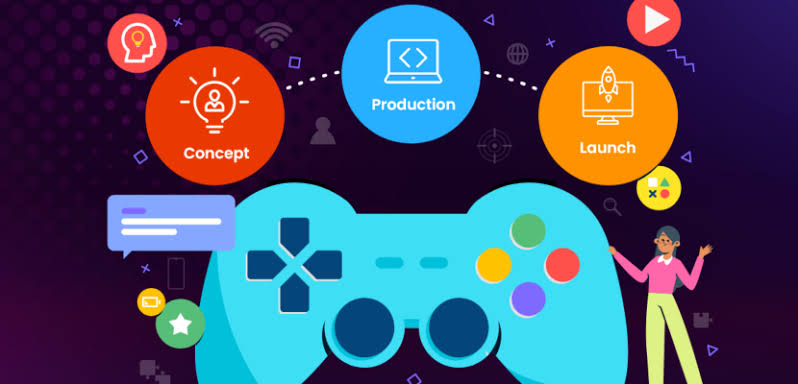
Writing code for basic game development involves several key steps. Here’s a simplified guide to get you started:.
- C#: Used with Unity.
- C++: Commonly used with Unreal Engine and other engines.
- Python: Suitable for smaller games or prototyping.
- JavaScript: Often used for web-based games or with game frameworks like Phaser.
- Set Up Your Development Environment:
- Install the necessary software development tools, including a code editor or integrated development environment (IDE) suitable for your chosen language.
- Download and set up any additional tools or libraries specific to the game engine or framework you’ll be using.
- Understand Game Loop
- The game loop is a fundamental concept in game development that controls the flow of the game. It typically consists of four main stages:
- Input Processing: Gather input from the player, such as keyboard, mouse, or controller input.
- Update: Update the game state based on the input received and any other relevant factors. This includes updating the positions of game objects, handling collisions, and implementing game logic.
- Render: Render the current state of the game to the screen, including all visual elements such as sprites, backgrounds, and user interfaces.
- Frame Limiting: Control the frame rate of the game to ensure smooth gameplay. This may involve limiting the number of frames rendered per second (FPS) or implementing techniques such as frame interpolation or delta timing.
- Understanding and implementing the game loop is essential for creating a functioning game.
- Create Game Objects and Components:
- Identify the key components of your game, such as characters, obstacles, collectibles, and environments.
- Write code to define these game objects and their behaviors. This may include defining movement, collision detection, animation, and interaction logic.
- Handle Input:
- Write code to handle player input, such as moving characters, jumping, shooting, or interacting with objects.
- Implement event listeners or input handling functions to respond to player actions.
- Implement Game Logic:
- Define the rules and mechanics of your game, such as scoring, level progression, enemy behavior, and win/lose conditions.
- Write code to implement these game mechanics, ensuring they are cohesive and balanced.
- Handle Collisions and Physics:
- Implement collision detection algorithms to detect when game objects intersect or interact with each other.
- Apply physics principles to simulate realistic movement and interactions between objects, such as gravity, friction, and momentum.
- Test and Debug:
- Test your game frequently to identify and fix any bugs, errors, or gameplay issues.
- Use debugging tools and techniques to diagnose and resolve problems in your code.
- Iterate and Refine:
- Continuously iterate on your game design, mechanics, and code based on feedback from playtesting and user experience.
- Refine your code to improve performance, readability, and maintainability.
- Publish and Share:
- Once your game is complete, consider publishing it to online platforms, app stores, or game distribution platforms to share it with others.
- Promote your game through social media, forums, and communities to reach a wider audience.
- Remember, game development is a creative and iterative process, so don’t be afraid to experiment, learn from your mistakes, and keep refining your skills and projects over time.
